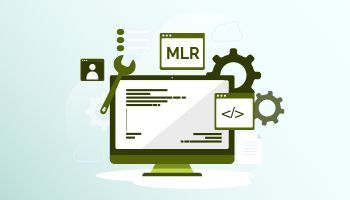The pharma marketing industry is evolving rapidly on account of digital transformation. Thus, pharma companies must rethink their content strategy with respect to modular content to cater to the right audience.
What is Modular Content?
Modular content is commonplace in FMCG and retail sectors, where the demand for personalized content is high. Digital innovation has increased the pressure on the pharmaceutical industry to generate more content to keep up with the needs of the sector. Creating modular content allows pharma marketers to produce more content quicker while reducing inefficiencies. It is essentially a scientific style of content management that emphasizes content reuse to help create effective, omnichannel content at scale.
Modular content contains pre-designed blocks of content modules used to create marketing assets. Each of these modules covers all the elements required to provide a detailed picture of the content, including product claims, references, graphics, and logos. It has specific business rules that specify how to use the module, which results in content that can be delivered as a standalone or in combination with other content modules.
Benefits of Adopting Modular Content
Content and design elements are modular, enabling easy reuse and organizing into a unified content model. With digital transformation services, the adoption of modular content is easier and more effective. Content creators can focus on creation and quality rather than the logistics of content management or coordinating with developers. Here are some of the top benefits of incorporating modular content.
-
Increases Marketing Agility


The modern consumer interacts online without even talking to any company personnel. This is where agility comes in. If a consumer does contact your company for information, you need to provide it quickly. Working with modular content significantly reduces the time to bring information to the audience. Consumer engagement becomes the focus in such cases, and the marketing and sales teams need to have assets ready at their fingertips. With faster content creation, your content supply chain becomes efficient, and you can achieve more with the same resources.
-
Easier MLR


When marketers incorporate modular content, they can remove the duplication of MLR work. Instead of constantly reviewing assets with the same messages, MLR can develop content modules once and focus their attention on launching new campaigns faster. Content creators need not struggle with rigid CMS architecture or aging infrastructure and can continuously develop new features and experiences to help content extend further and make it more reusable.
-
Better Brand Consistency


Modular content can separate design from content so that when developers repurpose content, brand rules are automatically applied to their selected text and images. The content structure is prepared in advance, thus allowing users to achieve a consistent customer impression. Marketing teams can focus on selecting modules that align with the brand and the latest marketing campaign without worrying about off-brand executions. Since core elements are built-in, it’s also easier to maintain strict compliance with guidelines.
-
Content Reuse


Marketing and sales teams can build on the existing content to expand into new markets using localized content while retaining global elements consistently. Many innovative content ideas went under-exploited without a modular content approach because repurposing them across channels was difficult. With a modular content structure, teams can easily share quality content.
The outcome of creators and developers managing content independently is much better with prompt results.
-
Omnichannel


Content developers often grapple with serving audiences across various platforms. Modular content, with its reusability, can provide a strong mechanism for personalized content. A modular approach lets you create omnichannel strategies since its modules can be assembled quickly and in different configurations, facilitating you to build personalized customer journeys that tell your product story across channels.
-
Innovation


Continual minor improvements contribute more to an effective content strategy than huge, one-step improvements. Modular content lets you release modules quickly, assimilate what does and doesn’t work for your audience, and then update individual modules as per specific demand. This drives innovation and experimentation, thus helping you create focused content to engage customers.
How to Build a Modular Content Model?
Modular content makes the whole pharma chain work more efficiently since it impacts not just sales and marketing but also the entire customer experience, spanning different departments and delivering via multiple channels. However, an internal rollout plan is essential for building a perfect modular content model for your pharma strategy. You should consider some key elements when building your modular content plan.
- Create content templates for effective reuse. A generic template with core brand assets can help teams generate content faster by inserting appropriate modules to customize the template as per campaign strategies.
- Document the modular content creation process so that it is consistent across all teams. This should include the briefing and assembly process, localization processes, and adjusting approval workflows by involving MLRs.
- Include regulatory considerations from the start. When you include MLRs early on in the modular content incorporation process, it helps you factor in independent elements across marketing campaigns and their nuances.
- Identify stakeholders that will be impacted by the change and articulate a motivation for each. This way, all stakeholders who experience some change in content creation and production can be assured of an effective changed management strategy.
- Modular content reuses and repurposes assets, and thus you need an efficient system to maintain all your asset metadata. The first step would be to select your branding approach and gather content. Next, divide the content into modules and assign metadata and rules to each. Lastly, develop your communication book for using the content and get it approved and ready for use.
- Assess the technology requirements for integrating modular content. The basis of modular content in pharma is a digital asset management solution where content is stored, shared, and managed. In addition, it’s a good idea to include a content authoring tool for modular content for faster creation and easier management of your content.
The Bottom Line
Catering to the right audience with suitable content is important for pharma companies. Companies need intelligent pharma strategies with modular content to gain a competitive advantage in the market.
If you’re one such pharma company looking to change the content experience for your brand, Amura Marketing Technologies is the leading pharma marketing agency and a perfect solution for your modular content needs. Amura Marketing Technologies can help grow your pharma business using organic content to reach the right audience.

